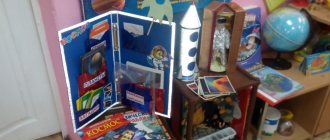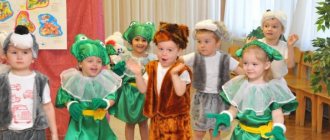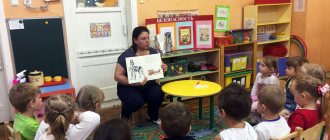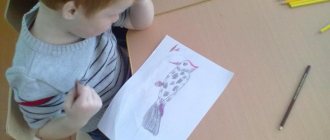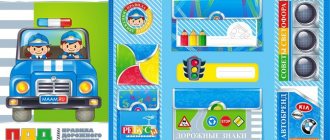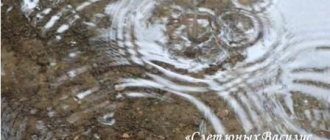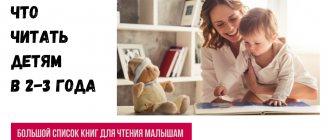The role of fairy tales for children in the middle group
Fairy tales give children variety, good and kind emotions. The main activity for children at this age is play. Fairy tales help create a plot for role-playing games. Children learn to dramatize, find a problem and solve it. It is with their help that children begin to understand what is good and what is bad.
In addition, it is with their help that children develop morality and imagination. The advantage of this genre is that the baby’s personality develops simultaneously with competent speech. The fairy tale is aimed at the ability to regulate your emotions and correctly display them when communicating.
Fairy tales in the middle group of kindergarten
Lion and mouse
The lion was sleeping. A mouse ran over his body. The lion woke up and caught her. The mouse began to ask: “If you let me go, I will do good to you too.” The lion laughed that the mouse promised to do good to him, but let it go.
One day, hunters caught a lion and tied it to a tree with a rope. The mouse heard the lion's roar, came running, gnawed the rope and said: “Remember, you laughed, did not believe that I could do good to you, but now you see, good can come from a mouse.”
- END -
How to conduct interesting activities
To make the lesson truly interesting for children, you need to create a fairly bright and emotional atmosphere. There should be a lot of color pictures and things around that will help children and set them up for a fairy tale. Seeing a toy with Ivanushka the Fool, children will be able to understand what fairy tale they will be watching today. They will immediately guess what will be discussed in the lesson. This is also required by the Russian Federal State Educational Standard. The activity should be lively and active. Children must talk, draw and show.
On a note! There should be many different games. Don't dwell on one for too long. In this case, children will quickly lose interest in what is happening.
Performances based on stories
Productions based on fairy tales can be divided into 2 types:
- Real. The teacher reads the work. Then the roles are handed out, and the children must remember what their heroes said. Such a dramatization trains memory, oral speech and logic of statements. For example, what the little goat and the little fox were talking about.
- Fictional. You can make a production based on any fairy tale. In addition, you can organize a meeting of different heroes from different fairy tales. For example, what would seven little goats and a cockerel talk about? Many children will enjoy the game about fairy-tale characters who ended up in their group. The kids will be able to talk to their favorite characters. In return, these characters will be able to share their experiences with children.
Productions based on fairy tales
Play activity
Since the main type of activity for children is play, preschool teachers should rely on this activity. Games will help you learn everything faster, and the learning itself will be much more fun. In general, there are a large number of different games. For example, "Dropped Frame". This game helps develop monologue speech.
Federal State Educational Standard for Preschool Education
At the same time, memory is trained. In this game you need to create a plot based on a series of pictures. One picture is removed. The child needs to understand what happened on the removed card and tell about it. There is a game called "Show Me". The child shows and talks about some fairy tale hero. The others are trying to guess who it is.
Games based on fairy tales
What does the fairy tale The Fox and the Crane teach?
This fairy tale teaches you to be attentive to others, because this is the key to strong friendship! It shows the short-lived friendship between a cunning fox and a wise crane. Once a cheat invited a feathered friend to visit, and she put the treat on a flat plate so that he could only knock with his beak. The crane repaid his friend in kind for such hospitality, offering the red-haired guest a treat in a narrow jug...
The fox and the crane became friends. She even became his godfather when the she-bear gave birth to a cub. So one day the fox decided to treat the crane, and went to invite him to visit her: “Come, little kuman, come, dear!” How I can treat you! The crane is going to a feast, and the fox made semolina porridge and spread it on the plate. Served and treated: - Eat, my darling kumanek! I cooked it myself. The crane slammed its nose, knocked and knocked, but nothing hit. And at this time the fox is licking the porridge for itself and licking it all off itself. The porridge is eaten; The fox said: “Don’t blame me, dear godfather!” There is nothing more to treat! - Thank you, godfather, and that’s it! Come and visit me now. The next day the fox comes, and the crane prepared okroshka, put it in a jug with a small neck, put it on the table and said: “Eat, gossip!” True, there is nothing more to treat. The fox began to spin around the jug, and would come in this way and that, and lick it and smell it; nothing is enough! My head won't fit into the jug. Meanwhile, the crane pecks and pecks until it has eaten everything. - Don't blame me, godfather! There is nothing more to treat. The fox was annoyed: she thought that she had enough to eat for a whole week, but she went home as if she was slurping unsalted food. As it came back, so it responded. Since then, the fox and the crane have been apart in their friendship.
Man and bear
(Russian folktale)
A man went into the forest to sow turnips. He plows and works there. A bear came to him:
- Man, I'll break you.
- Don’t break me, little bear, better let’s sow turnips together. I’ll take at least the roots for myself, and I’ll give you the tops.
“Be it so,” said the bear. “And if you deceive me, at least don’t go to the forest with me.”
He said and went into the oak grove.
The turnip has grown large. A man came in the fall to dig turnips. And the bear crawls out of the oak tree:
- Man, let's divide the turnips, give me my share.
- Okay, little bear, let's divide: the tops for you, the roots for me.
The man gave all the tops to the bear. And he put the turnips on a cart and took them to the city to sell.
A bear meets him:
- Man, where are you going?
- I’m going, little bear, to the city to sell some roots.
- Let me try - what kind of spine is it?
The man gave him a turnip. How the bear ate:
- Ahh! - roared. - Man, you deceived me! Your roots are sweet. Now don’t go to my forest to buy firewood, otherwise I’ll break it.
The next year the man sowed rye in that place. He came to reap, and the bear was waiting for him:
- Now, man, you can’t fool me, give me my share.
The man says:
- Be so. Take the roots, little bear, and I’ll take even the tops for myself.
They collected rye. The man gave the roots to the bear, put the rye on a cart and took it home.
The bear fought and fought, but could not do anything with the roots.
He got angry with the man, and from then on the bear and the man began to have enmity.
The Man and the Bear is a Russian folk tale that explains why animals stopped making friends with people. This story is about how a bear helped a man plant a garden twice, and each time the cunning man deceived him. In the first one they planted turnips. The man took all the roots for himself and gave the tops to the poor bear. The dissatisfied bear didn’t want to take the man’s tops the next time. But again he made a mistake: the man, having collected the wheat, took the “delicious” tops for himself, and gave the useless roots to the clubfoot. The bear got angry with him and did not help him anymore. Would you split the harvest equally with the bear?
An old one-year-old man came out. He began to wave his sleeve and let the birds fly. Each bird has its own special name. The old man waved for the first time, and the first three birds flew away. There was a whiff of cold and frost.
The old man, a year old, waved a second time - and the second troika flew off. The snow began to melt, flowers appeared in the fields.
The old man waved a third time - the third troika flew. It became hot, stuffy, sultry. The men began to reap rye.
The old man waved for the fourth time, and three more birds flew. A cold wind blew, frequent rain fell, and fog settled in. But the birds were not ordinary. Each bird has four wings. Each wing has seven feathers. Each feather also has its own name. One half of the feather is white, the other is black. The bird flaps once and it becomes light-light; if it flaps again, it becomes dark-dark.
What kind of birds flew out of the old man's sleeve? What kind of four wings does every bird have? What are the seven feathers in each wing? What does it mean that each feather has one half white and the other black?
An owl flew with a cheerful head; So she flew, flew and sat down, turned her head, looked around, took off and flew again; she flew and flew and sat down, turned her head, looked around, but her eyes were like bowls, they couldn’t see a crumb! This is not a fairy tale, this is a saying, but a fairy tale lies ahead.
Spring and winter have come and well, drive it with the sun and bake it, and call the grass-ant out of the ground; The grass poured out and ran out into the sun to look, and brought out the first flowers - snow flowers: blue and white, blue-scarlet and yellow-gray. Migratory birds reached out from across the sea: geese and swans, cranes and herons, waders and ducks, songbirds and a titmouse. Everyone flocked to us in Rus' to build nests and live with families. So they dispersed to their own lands: through the steppes, through forests, through swamps, along streams.
The crane stands alone in the field, looks around, strokes its head, and thinks: “I need to get a farm, build a nest and get a mistress.”
So he built a nest right next to the swamp, and in the swamp, in the hummocks, a long-nosed heron sits, sits, looks at the crane and chuckles to himself: “What a clumsy one he was born!” Meanwhile, the crane came up with an idea: “Give me, he says, I’ll woo the heron, she has joined our family: she has a beak and is tall on her feet.” So he walked along an untrodden path through the swamp: he hoe and hoe with his feet, but his legs and tail just got stuck; when he hits his beak, his tail pulls out, but his beak gets stuck; pull out the beak - the tail will get stuck; I barely reached the heron’s hummock, looked into the reeds and asked:
- Is the little heron at home? - Here she is. What do you need? - answered the heron. “Marry me,” said the crane. - How wrong, I’ll marry you, the lanky one: you’re wearing a short dress, and you yourself walk on foot, live frugally, you’ll starve me to death in the nest! These words seemed offensive to the crane. Silently he turned and went home: hit and miss, hit and turn. The heron, sitting at home, thought: “Well, really, why did I refuse him, because it’s better for me to live alone? He is of good birth, they call him a dandy, he walks with a crest; I’ll go to say a good word to him.”
The heron set off, but the path through the swamp is not close: first one leg gets stuck, then the other. If he pulls one out, he gets stuck in the other. The wing will be pulled out and the beak will be planted; Well, she came and said: “Crane, I’m coming for you!” “No, heron,” the crane tells her, “I’ve changed my mind, I don’t want to marry you.” Go back where you came from! The heron felt ashamed, she covered herself with her wing and went to her hummock; and the crane, looking after her, regretted that he had refused; So he jumped out of the nest and followed her to knead the swamp. He comes and says: “Well, so be it, heron, I’ll take you for myself.” And the heron sits there, angry and angry, and doesn’t want to talk to the crane. “Listen, madam heron, I take you for myself,” repeated the crane. “You take it, but I’m not going,” she answered.
There is nothing to do, the crane went home again. “So good,” he thought, “now I’ll never take her!” The crane sat down in the grass and did not want to look in the direction where the heron lived. And she changed her mind again: “It’s better to live together than alone. I’ll go and make peace with him and marry him.”
So I went to hobble through the swamp again. The path to the crane is long, the swamp is sticky: first one leg gets stuck, then the other. The wing will be pulled out and the beak will be planted; She forcibly reached the crane’s nest and said: “Juronka, listen, so be it, I’m coming for you!” And the crane answered her: “Fedora won’t marry Yegor, and Fedora would marry Yegor, but Yegor won’t marry.” Having said these words, the crane turned away. The heron has left. The crane thought and thought and again regretted why he could not agree to take the heron for himself while she wanted it; He quickly got up and walked through the swamp again: hoe, hoe with his feet, but his legs and tail just got stuck; If he pushes his beak, pulls out his tail, the beak gets stuck, and if he pulls out his beak, the tail gets stuck. This is how they follow each other to this day; the path was paved, but no beer was brewed.
- END -
Alexey Tolstoy
Card index of works for the middle group
There is an educational standard that controls the kindergarten program. It includes a considerable list of works that should be studied in kindergarten. It is worth listing fairy tales for the middle group of kindergarten.
On a note! The list is quite long, but they all deserve attention. Among them there are both Russian folk tales and original ones.
- “About Ivanushka the Fool”;
- “Fox - sister and wolf”;
- "Winter quarters";
- "Ficky";
- “Sister Alyonushka and brother Ivanushka”;
- "The Fox and the Goat";
- "Fox with a rolling pin";
- "Zhiharka";
- “Wonderful little paws”;
- "War of mushrooms and berries";
- "The Cockerel and the Bean Seed";
- "Fox - bast shoe";
- "Sly Fox";
- "Terrible Guest";
- “Shepherd with a pipe”;
- "Spikelet";
- "Three piglets";
- "Liar",
Zimovye
- “The Fox and the Hare” (modeled by A.N. Tolstoy),
- "Tails"
- "Snow Maiden",
- "Shepherd's pipe"
- .“Goat-dereza”,
- "Fear has big eyes",
- "Swan geese",
- "The Fox and the Crane"
- "Two Greedy Bears"
- "The Forest Bear and the Naughty Mouse"
- "Dr. Aibolit";
- "Hare and Hedgehog"
- "The Bremen Town Musicians",
- "Little Red Riding Hood",
- "Days of the week",
- "Turnip".
On a note! This list of fairy tales is worth not only reading, but also watching. This will make it easier for children to remember what is happening in them. Moreover, for greater effect, you need to alternate viewing and reading.
Fox with a rolling pin (Russian fairy tale)
The fox was walking along the path and found a rolling pin. She picked it up and moved on.
She came to the village and knocked on the hut: “Knock, knock, knock!” - Who's there? - Me, little fox-sister! Let me spend the night! “It’s cramped here without you.” - Yes, I won’t displace you: I’ll lie down on the bench myself, my tail under the bench, the rolling pin under the stove.
They let her in. So she lay down on the bench herself, her tail under the bench, the rolling pin under the stove. Early in the morning the fox got up, burned her rolling pin, and then asked: “Where is my rolling pin?” Give me some chicken for her! Man - there is nothing to do! - I gave her a chicken for a rolling pin.
The fox took the chicken and walked and sang: “The fox was walking along the path, she found a rolling pin, and she took the chicken by the rolling pin!” She came to another village: “Knock-knock-knock!” - Who's there?
- Me, little fox-sister! Let me spend the night! “It’s cramped here without you.” - Yes, I won’t push you aside: I’ll lie down on the bench myself, tail under the bench, chicken under the stove. They let her in.
The little fox lay down on the bench, her tail under the bench, and the chicken under the stove. Early in the morning the fox slowly got up, grabbed the chicken, ate it, and then said: “Where is my chicken?” Give me a piece for it! There was nothing to be done, the owner had to give her a piece of chicken for the chicken.
Jackdaw
The brother and sister had a pet jackdaw. She ate from her hands, let herself be petted, flew out into the wild and flew back. Once my sister began to wash herself. She took the ring off her hand, put it on the sink and lathered her face with soap. And when she rinsed the soap, she looked: where is the ring? But there is no ring. She shouted to her brother: “Give me the ring, don’t tease me!” Why did you take it? “I didn’t take anything,” the brother answered. His sister quarreled with him and cried. Grandma heard. - What do you have here? - speaks. - Give me glasses, now I’ll find this ring. We rushed to look for glasses - no glasses. “I just put them on the table,” the grandmother cries. -Where should they go? How can I thread a needle now? And she screamed at the boy.
- This is your business! Why are you teasing grandma? The boy got offended and ran out of the house. He looks, and a jackdaw is flying above the roof, and something glitters under her beak. I took a closer look - yes, these are glasses! The boy hid behind a tree and began to watch. And the jackdaw sat on the roof, looked around to see if anyone was watching, and began pushing the glasses on the roof into the crack with her beak. The grandmother came out onto the porch and said to the boy: “Tell me, where are my glasses?” - On the roof! - said the boy. Grandma was surprised. And the boy climbed onto the roof and pulled out his grandmother’s glasses from the crack. Then he pulled out the ring from there. And then he took out pieces of glass, and then a lot of different pieces of money. The grandmother was happy with the glasses, and the sister was happy with the ring and said to her brother: “Forgive me, I was thinking about you, and this is a thief jackdaw.” And they made peace with their brother. Grandmother said: “That’s all them, jackdaws and magpies.” Whatever glitters, they drag everything away.
